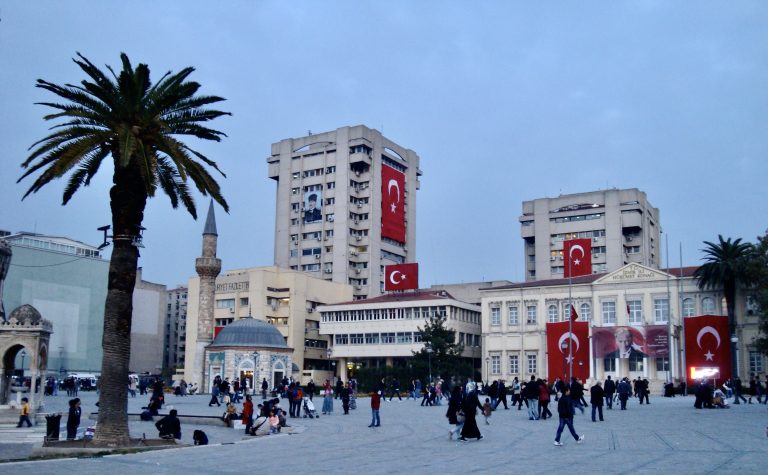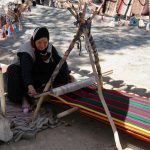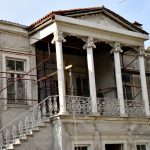The water-facing Konak Meydanı in the town centre is as close as İzmir gets to a touristic and cultural heart. Once a depressing concrete desert, it has been transformed into a lively pedestrianised square with its very own cactus garden around the İzban station.
At the opposite end of the square is the cute little Konak Cami (Konak Mosque), dating back to 1748 and covered in blue and white Kütahya tiles. Nearby is the Ottoman clocktower (Saat kulesi) which has been helping locals stick to their timetables since 1901 and which has become a symbol of İzmir. One of a series erected all over the country to celebrate the 25th anniversary of Sultan Abdülhamid II’s accession to the throne, it was designed by French-born Raymond Charles Pere (1854-1929)
Near the clocktower in front of the İzmir Büyükşehir Belediyesi (Town Hall) a statue commemorates Hasan Tahsın (1888-1919), a journalist who is said to have fired the first shot in the Turkish War of Independence when the Greeks invaded what was then Smyrna.
Down at the waterfront you’ll see the Konak Pier, now a shopping centre with restaurants along the sides. It was designed by the same Eifel who was responsible for the famous tower in Paris. From here a waterside promenade runs all the way up to Alsancak.
Facing the Pier is the western end of Fevzi Paşa Bulvarı which leads to Basmane. At this western end you’ll find many examples of the style of architecture known as First National that was popular at the start of the 20th century. There’s also a small statue of Kemaleddin Bey (1870-1927), an architect who was one of the leading lights of the movement.
Directly behind Konak Meydanı lie the winding streets of the Kemeraltı bazaar, where several impressive late Ottoman mosques, the finest of them the Şadırvanlı Cami (Mosque with Ablutions Fountain), keep a low profile amid the hurly burly. The Şadırvanlı Cami was originally built in 1636 but has been restored many times over the years so that it’s now a mainly 19th-century structure. In 1922 its beautiful ablutions fountain was illegally demolished.
Here, too, is the Kızlarağası Hanı, erected in 1744 and restored to house antique and souvenir shops as well as an inviting courtyard tea garden. The streets round it are the place to come to drink Turkish coffee boiled in individual cups directly over a flame (fincanda pişen).
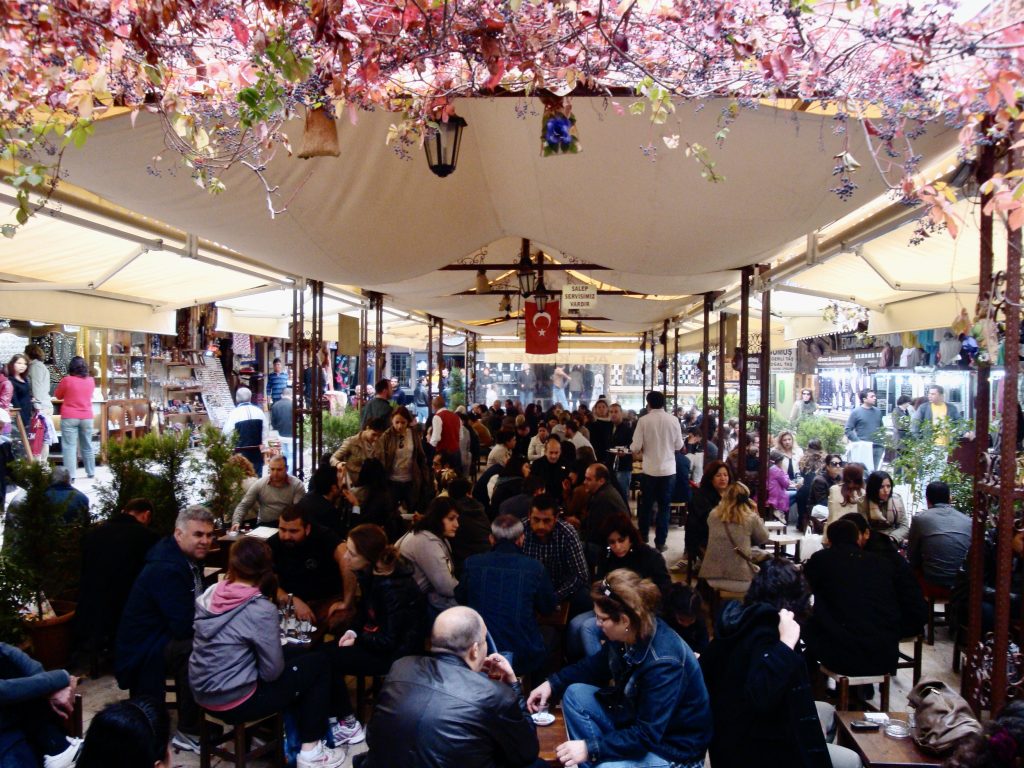
Behind the buildings at the Konak İzban station end of the square is the old İzmir State Ballet and Opera House, built in 1926 and another example of First National Architecture. The company has now moved to Bornova.
Uphill from the square is the wonderful Ethnography Museum (closed Mondays). Housed inside what was once a 19th-century hospital, it contains recreations of the interiors of old İzmir houses alongside setpiece dioramas of wedding and circumcision ceremonies. It’s a great place to find out about several handicrafts that are on their very last legs, including the art of making the blue-glass “evil eye” beads for which İzmir used to be famous (and which you can still watch being made at nearby Nazarköy).
Right beside it is the Archaeology Museum (closed Mondays). This houses finds from most of the archaeological sites in the Aegean region as well as from sites round İzmir itself. As so often, many of the most impressive items are actually in the grounds outside. The upper floor of the museum shows off a large collection of ceramics including impressive sarcophagi from Clazomenae (Urla). The single most impressive item has to be the bronze statue of a naked runner found in the sea off Kyme (Aliağa).
There’s a small Children’s Museum on the slopes too. The sea views from the Varyant road up to the museums are spectacular.
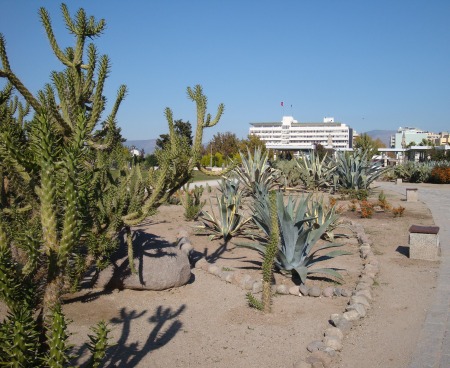
South of the square the İzmir Sanat Galerisi (Art Gallery) hardly advertises itself but has some fine late Ottoman paintings on display on the first floor.
Transport info
Konak is a major transport hub for İzmir with an İzban station, a ferry terminal, a local bus station and even some old-fashioned taxi dolmuşes waiting for customers nearby.
